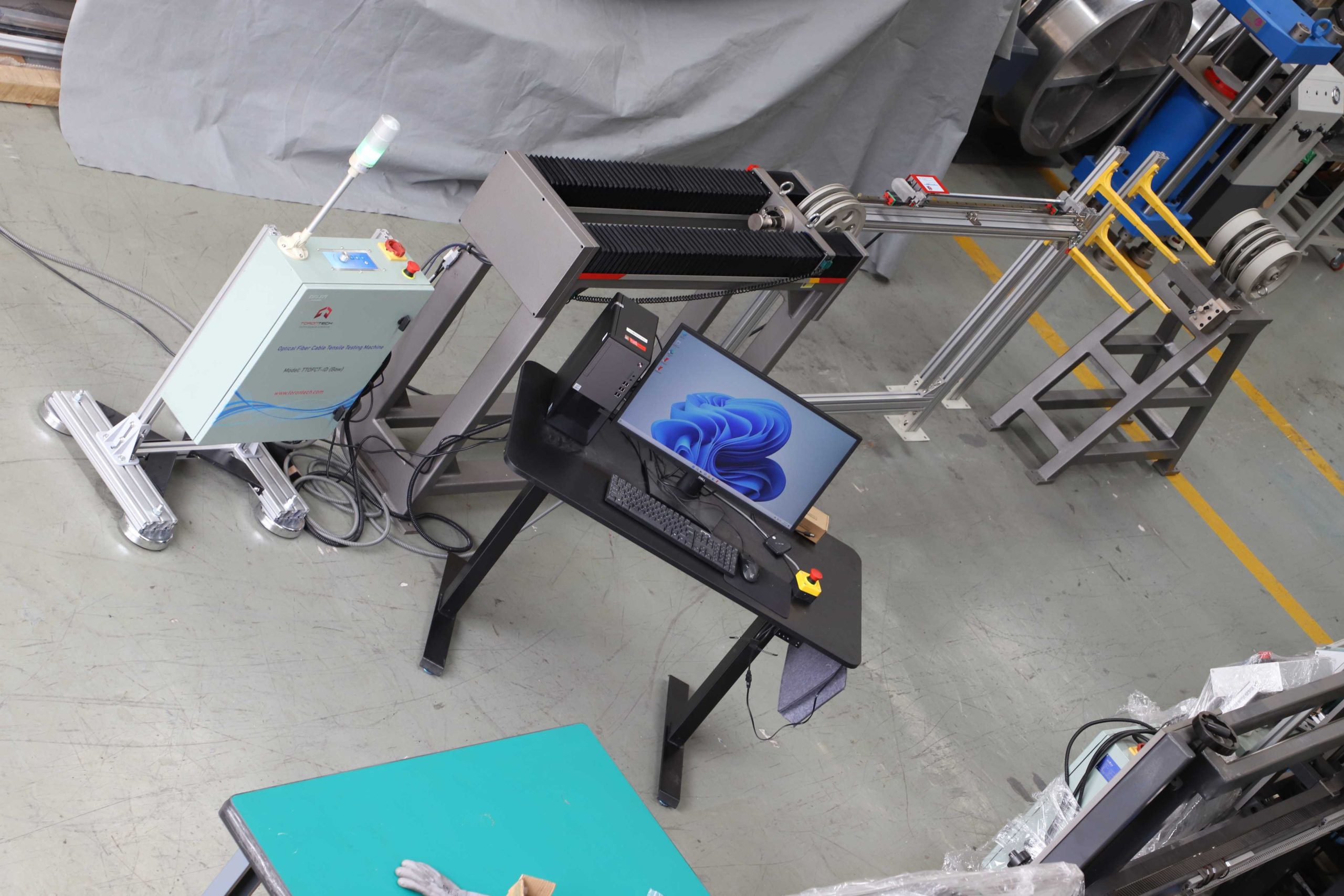A beginner’s guide to optical measurement system applications
Wiki Article
All You Need to Understand About Robotic Vision and Its Applications in Advanced Optical Measurement Solutions
Robotic vision represents a significant development in the crossway of computer vision, expert system, and artificial intelligence. This innovation enhances the precision of optical dimension systems, allowing real-time information evaluation and boosted high quality control. Its impact covers several markets, from manufacturing to medical care. However, the advancing landscape of robotic vision raises questions regarding future capabilities and applications (optical fibre diameter analyser). What advancements lie in advance in this transformative area?Understanding Robotic Vision: Secret Concepts and Technologies
Robotic vision includes the innovations and techniques that enable devices to interpret and recognize visual information from their atmosphere. This area incorporates components of computer vision, expert system, and machine discovering to help with computerized decision-making based upon aesthetic data. Key principles consist of picture handling, which entails the improvement and evaluation of pictures to extract meaningful features, and things recognition, which allows machines to identify and classify items within a scene.
The Assimilation of Robotic Vision With Optical Dimension Solutions
As markets progressively require precision and efficiency, the integration of robotic vision with optical dimension systems has emerged as a transformative technique. This synergy allows robotics to regard and translate their environments, improving the capacity of optical measurement systems to assess and assess things with unmatched accuracy. By equipping optical sensors with advanced imaging innovations, robotic vision enables real-time data collection and handling, promoting instant changes to measurement criteria.The mix encourages automated systems to discover variations in measurements, surface top quality, and placement, which are critical in quality control procedures. Boosted formulas, such as artificial intelligence, further increase this assimilation by enhancing the systems' capability to adapt to different environments and situations. As a result, the integration not just enhances dimension processes yet also lessens errors, ensuring that products satisfy strict market standards, thereby strengthening the duty of robotic vision in the future of optical measurement systems.
Applications of Robotic Vision in Manufacturing
In modern manufacturing atmospheres, making use of vision systems has actually revolutionized production procedures by enabling devices to execute tasks with amazing accuracy and speed. Robotic vision systems are significantly utilized for quality assurance, where they inspect items for problems and warranty adherence to specifications. These systems use cameras and advanced formulas to evaluate products in real-time, significantly lowering the threat of human mistake.Additionally, robot vision facilitates automation in production line, enabling robots to precisely recognize components and assemble them with very little downtime. This modern technology likewise improves stock monitoring, as vision systems can monitor supply degrees and find disparities, guaranteeing a seamless supply chain.
In addition, robotic vision help in the execution of wise factories, where information from vision systems can be integrated with other innovations to enhance process. In general, the applications of robotic vision in making show its essential role in enhancing efficiency, quality, and productivity across numerous fields
Robotic Vision in Health Care: Reinventing Individual Care

In rehab, robotic vision help in monitoring person progress and tailoring treatment sessions to individual requirements. It supports doctor by automating jobs such as data collection and client surveillance, enabling for more time to concentrate on straight client communication. Additionally, robotic vision improves telemedicine by enabling remote diagnosis and online consultations, connecting the void in between patients and doctor. On the whole, the application of robotic vision in healthcare is reinventing person treatment, resulting in enhanced results, performance, and person complete satisfaction.
Future Patterns and Growths in Robotic Vision Modern Technology
The rapid evolution of robotic vision technology guarantees to additionally improve its applications throughout numerous fields, consisting of medical care. Future fads indicate a considerable change in the direction of incorporating expert system and equipment learning, allowing systems to pick up from vast datasets and improve accuracy over time. Enhanced sensor technologies and deep understanding formulas are anticipated to improve item recognition capabilities, allowing robotics to analyze intricate atmospheres better.
The integration of augmented reality (AR) with robot vision will likely reinvent how robots aid in surgical procedures and diagnostics. This harmony will certainly help with real-time information visualization, improving decision-making processes. Furthermore, miniaturization of parts will lead to even more compact and versatile robotic vision systems optical measurement system ideal for a selection of tasks. As these advancements unravel, industries will certainly witness increased automation and performance, solidifying robot vision as a cornerstone of innovative technical services.
Regularly Asked Questions
What Are the Key Components of a Robotic Vision System?
The major parts of a robot vision system consist of electronic cameras for image capture, cpus for data analysis, algorithms for analysis, and actuators for movement. Together, these aspects allow robotics to view and connect with their atmosphere successfully.How Does Robotic Vision Improve Accuracy in Measurements?
Robotic vision boosts measurement accuracy by making use of advanced imaging modern technologies, enabling precise object detection and spatial evaluation. This ability minimizes human error, raises repeatability, and permits real-time modifications, inevitably boosting total measurement integrity and efficiency.What Industries Benefit The Majority Of From Robotic Vision Modern Technology?
Different industries profit greatly from robotic vision modern technology, consisting of manufacturing, medical care, agriculture, and logistics. These industries use boosted accuracy, performance, and automation, resulting in improved efficiency and minimized functional expenses in their particular processes.Can Robotic Vision Systems Job in Low-Light Issues?
Robotic vision systems can without a doubt work in low-light conditions, using sophisticated sensing units and formulas to boost picture clarity. This capability permits them to execute successfully in various settings, consisting of commercial and security applications, despite having minimal illumination.What Are the Costs Connected With Implementing Robotic Vision?
The prices related to executing robot vision vary substantially, affected by parts such as cams, software program, and assimilation. Additional expenditures include upkeep, training personnel, and prospective upgrades to existing systems, which can build up over time.Report this wiki page